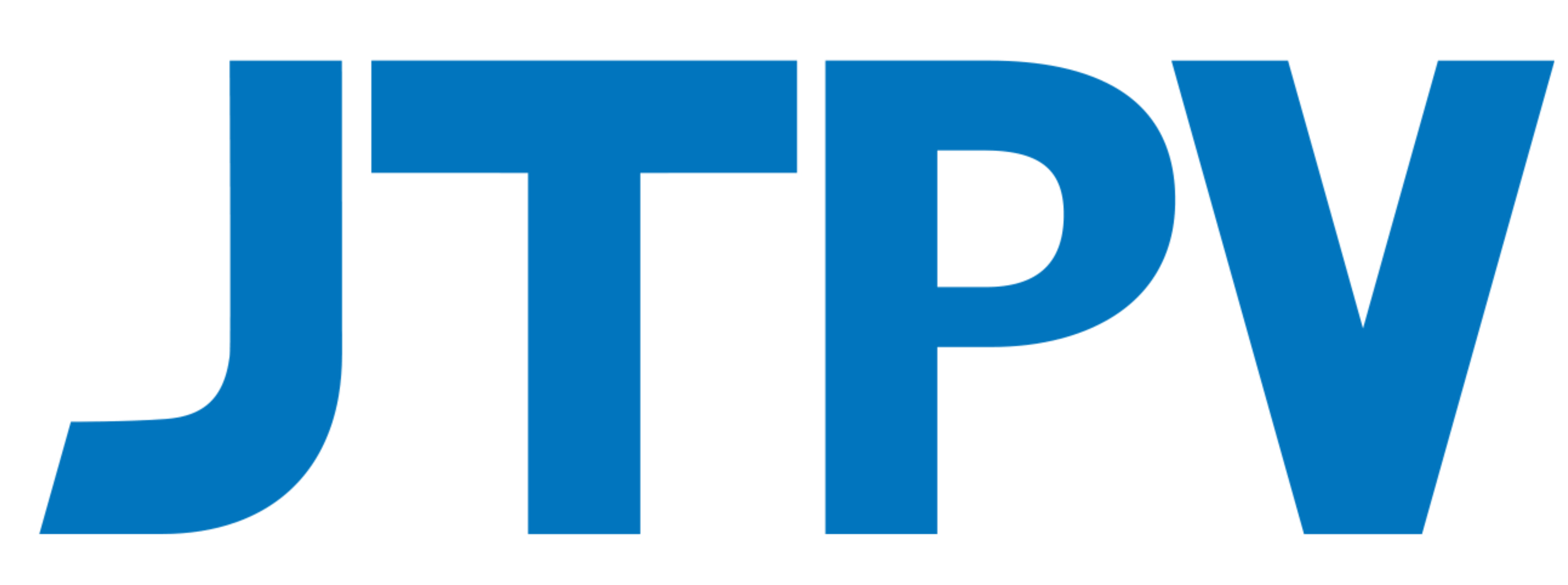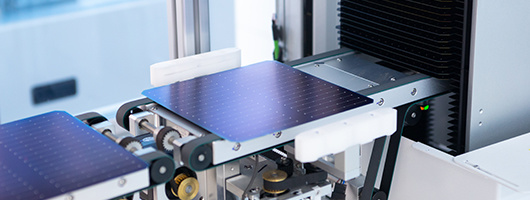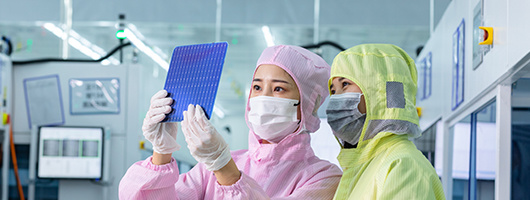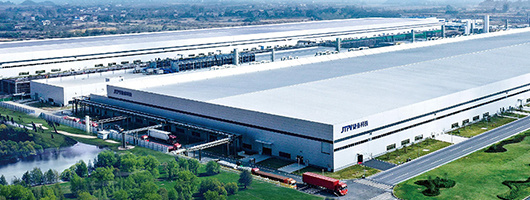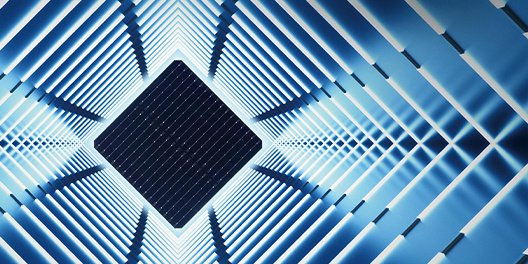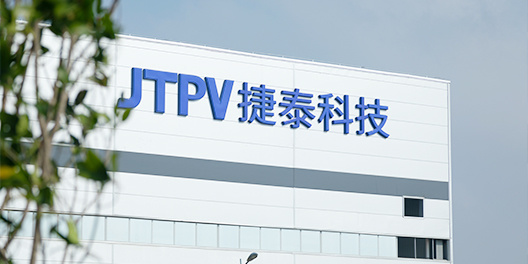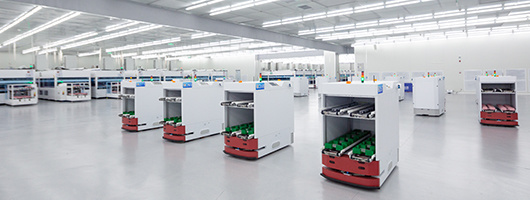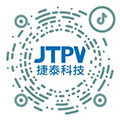n-TOPCon 電池 B 摻雜影響
Published:
2023-11-02 00:00
Source:
/ n-TOPCon 電池 B 摻雜影響 /
-
整理時間:2023-02-13 13:14 -
來源:Impact of boron doping on electrical performance and efficiency of n-TOPCon solar cell, [https://doi.org/10.1016/j.solener.2021.08.075] -
關鍵詞:B擴散,結深,峰值濃度,鈍化影響,接觸電阻率
問題
B擴摻雜曲線對(duì)n-TOPCon電池影響
-
I-V參數: Voc/FF/Rser/Jsc -
峰值濃度 peak concentration -
結深 junction depth -
飽和電流密度 -
接觸電阻率
關鍵結論
飽和暗電流影響
-
随著(zhe)結深和峰值濃度的增大,鈍化區 變大。原因是表面(miàn)複合及體複合加劇 -
降低鈍化區飽和電流密度,方向(xiàng)是低表面(miàn)濃度+淺結 -
結深0.5~0.85 μm範圍内,随著(zhe)結深增加,峰值濃度增大,金半接觸區 變小。可用“傳輸受限發(fā)射極”(對(duì)體複合不敏感)概念解釋:發(fā)射區重摻區域空穴濃度非常高,空穴壽命較低,因此空穴複合速率也較低。提升摻雜濃度,可降低金半接觸區飽和暗電流密度。結深大于1.0 μm時,金半接觸區飽和電流密度反而變大,主要是體複合加劇影響。 -
降低金半接觸區飽和暗電流,可以提高重摻區提高摻雜濃度和适當的結深~0.8um -
SE技術綜合輕擴區(鈍化區)和重擴區(金半接觸區域)優勢 -
Ag/Al漿腐蝕深度 0.45~0.63 μm,比耗盡區寬度高5倍以上,可不考率耗盡區對(duì)接觸電阻的影響 -
B摻雜濃度大于以上時,會顯著增加金半接觸區複合。表明在深度0.63 μm處B摻雜濃度臨界點要低于E+18量級
接觸電阻率
-
随著(zhe)峰值摻雜濃度增加,結深增加,接觸電阻率減小 -
結深不變,可通過(guò)提升摻雜濃度,接觸電阻率可由4.5降至1.1 mΩ/cm2 -
摻雜峰值濃度不變,可通過(guò)提高結深,將(jiāng)接觸電阻率降至1.1 mΩ/cm2
iVoc影響
-
QSSPC方式,取值1E15 cm-3過(guò)剩載流子濃度,1-sun光照條件下iVoc值 -
結深相同,随著(zhe)峰值濃度的增加,iVoc降低 -
峰值摻雜濃度相同,随著(zhe)結深的增加,iVoc降低 -
相比峰值摻雜濃度,結深對(duì)iVoc影響更大,絨面(miàn)片雙面(miàn)硼擴+AlOx/SiNx鈍化,iVoc可達到710+ mV
讨論
文獻報道(dào),n+ poly-Si發(fā)射極最低複合電流密度:
-
鈍化層之下,  ~ 1.4 fA/cm2,抛光片
~ 1.4 fA/cm2,抛光片 -
金半接觸區,
 ~ 35 fA/cm2
~ 35 fA/cm2
文獻報道(dào),n+ poly-Si發(fā)射極最低複合電流密度:
B摻雜p+層發(fā)射區複合:
-
非金半接觸區:可降低至 11 fA/cm2 150Ω/sqr -
Ag-Al栅接觸區優化前高達 1000 fA/cm2,優化後(hòu)可將(jiāng)至 ~300fA/cm2
B摻雜發(fā)射極制備方法:
-
BBr3/BCl3管式擴散 -
硼酸Boric acid擴散 -
B離子注入
目标:降低發(fā)射極飽和暗電流密度,提升iVoc。實現方式:
-
前表面(miàn)B擴發(fā)射極p+層,低表面(miàn)濃度+淺結 -
金半接觸電阻率要足夠低,保證接觸性能(néng) -
Ag/Al漿特性,金半接觸區域高複合如何優化? -
深結摻雜降低金半接觸區域複合損失 -
高表面(miàn)濃度-->低接觸電阻率
-
前人文獻總結:
-
Al2O3介質膜帶固定負電荷,對(duì)B擴發(fā)射極有很好(hǎo)的鈍化效果 -
濕化學(xué)處理後(hòu)SE方式,可提升Jsc ~0.3 mA/cm2 -
APCVD方式SE,Jsc提升0.4 mA/cm2,效率提升0.4%(abs) -
雙面(miàn)擴散後(hòu),矽片少子壽命可提升至1.2~1.5 ms -
漿料中添加Te可改善低接觸電阻率實現溫度區間 -
BCl3可用于B擴發(fā)射極的擴散實現 -
較低的峰值摻雜濃度,可能(néng)會使金半接觸區域的飽和電流密度變大,接觸電阻率升高 -
激光摻雜可實現B擴SE -
ALD Al2O3/PECVD SiNx對(duì)B擴發(fā)射極可實現良好(hǎo)鈍化效果 -
BBr3擴散過(guò)程原位氧化,可提升鈍化效果 -
用鋁Al漿取代Ag-Al漿,可獲得更高的iVoc和更低的 -
AlOx capping層厚度對(duì)B擴發(fā)射極鈍化效果有影響 -
Ag/Al栅線下金半接觸區複合,低B摻雜發(fā)射極複合更嚴重 -
B RVD方式摻雜 -
B擴發(fā)射極深結可有效降低金半接觸區域複合 -
BSG厚度、B擴方阻受O2流量影響 -
推進(jìn)溫度、氧化溫度是B擴最敏感的兩(liǎng)個影響因素 -
摻雜濃度低于 時,作爲電流傳輸機制,需要考慮熱聲子發(fā)射及熱聲子場發(fā)射效應 -
結深越深,接觸電阻率越低 -
耗散區對(duì)接觸電阻率的影響可以忽略 -
B摻雜過(guò)程中的表面(miàn)污染會限制效率 -
B在SiOx中的溶解度高于在晶矽c-Si中的溶解度
B擴發(fā)射極鈍化後(hòu)飽和暗電流密度
-
随著(zhe)結深和峰值濃度的增大,鈍化區  變大。原因是表面(miàn)複合及體複合加劇
變大。原因是表面(miàn)複合及體複合加劇 -
降低鈍化區飽和電流密度,方向(xiàng)是低表面(miàn)濃度+淺結 -
結深0.5~0.85 μm範圍内,随著(zhe)結深增加,峰值濃度增大,金半接觸區  變小。可用“傳輸受限發(fā)射極”(對(duì)體複合不敏感)概念解釋:發(fā)射區重摻區域空穴濃度非常高,空穴壽命較低,因此空穴複合速率也較低。提升摻雜濃度,可降低金半接觸區飽和暗電流密度。結深大于1.0 μm時,金半接觸區飽和電流密度反而變大,主要是體複合加劇影響。
變小。可用“傳輸受限發(fā)射極”(對(duì)體複合不敏感)概念解釋:發(fā)射區重摻區域空穴濃度非常高,空穴壽命較低,因此空穴複合速率也較低。提升摻雜濃度,可降低金半接觸區飽和暗電流密度。結深大于1.0 μm時,金半接觸區飽和電流密度反而變大,主要是體複合加劇影響。 -
降低金半接觸區飽和暗電流,可以提高重摻區提高摻雜濃度和适當的結深~0.8um -
SE技術綜合輕擴區(鈍化區)和重擴區(金半接觸區域)優勢
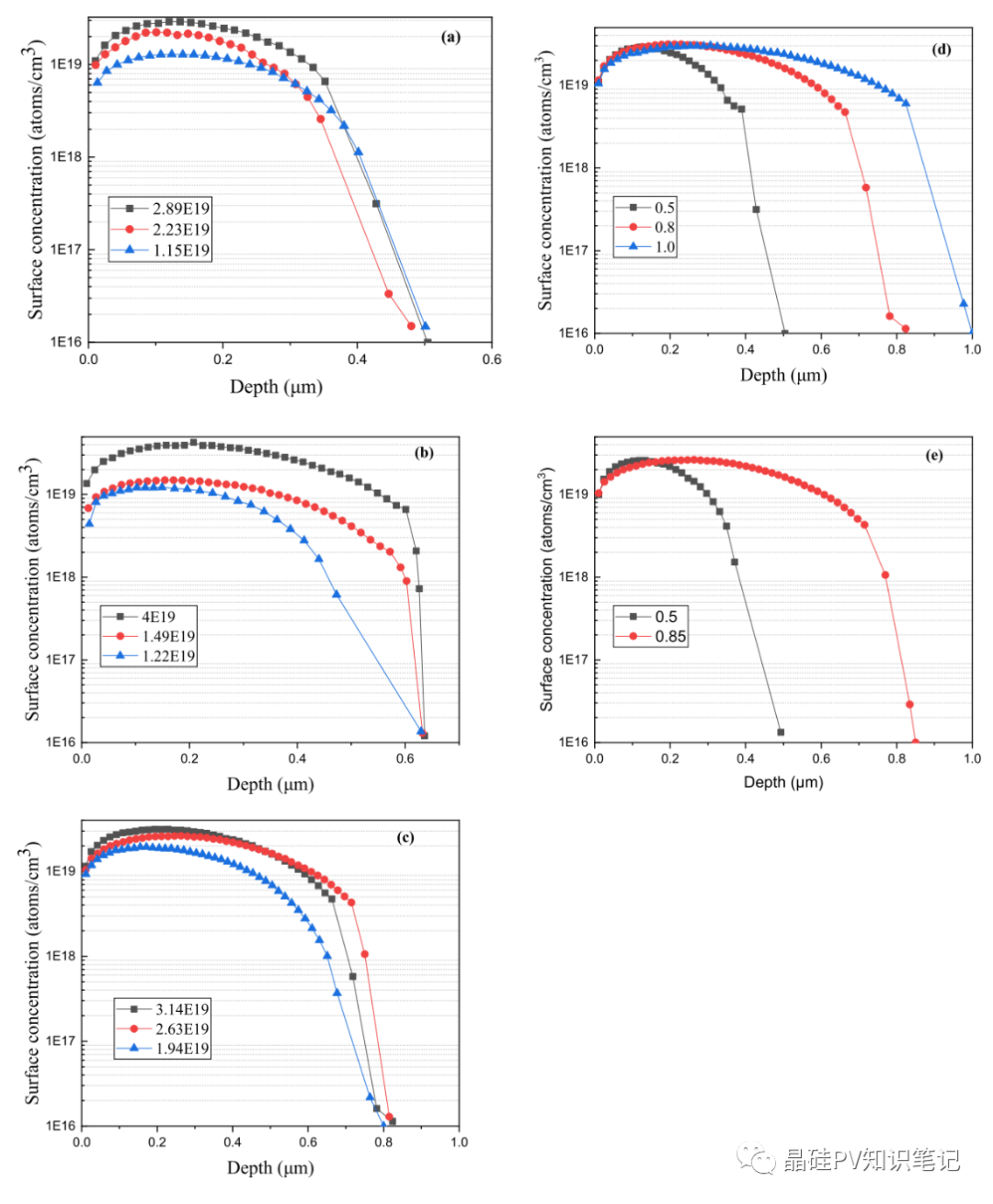
Fig. 2. ECV profiles of the change in the peak concentrations under one constant junction depth (a) Emitter D1 (d1≈0.5 μm), (b) Emitter D2 (d2≈0.63 μm), (c) Emitter D3 (d3≈0.8 μm); the change in junction depths under one constant peak concentration (d) Emitter N1(N1≈3E19 atoms/cm3 ) and (e) Emitter N2 (N2≈ 2.6E19 atoms/cm3 ).
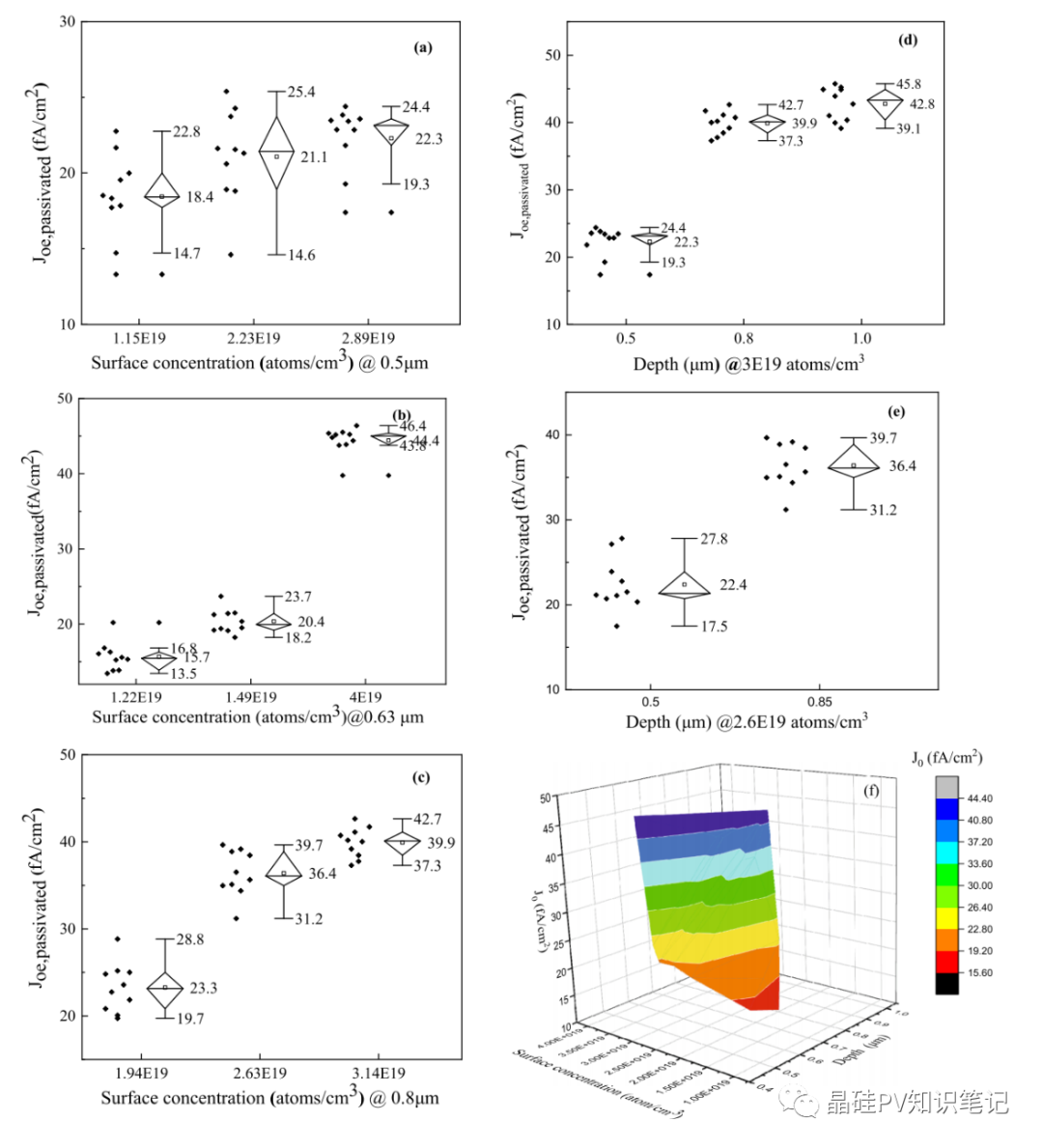
Fig. 3. Emitter dark saturation current densities in the passivated regions of (a) emitter D1, (b) emitter D2, (c) emitter D3, (d) emitter N1 and (e) emitter N2. And (f)the J0e, passivated as a function of the junction depth and the peak concentration of B-doped profile.
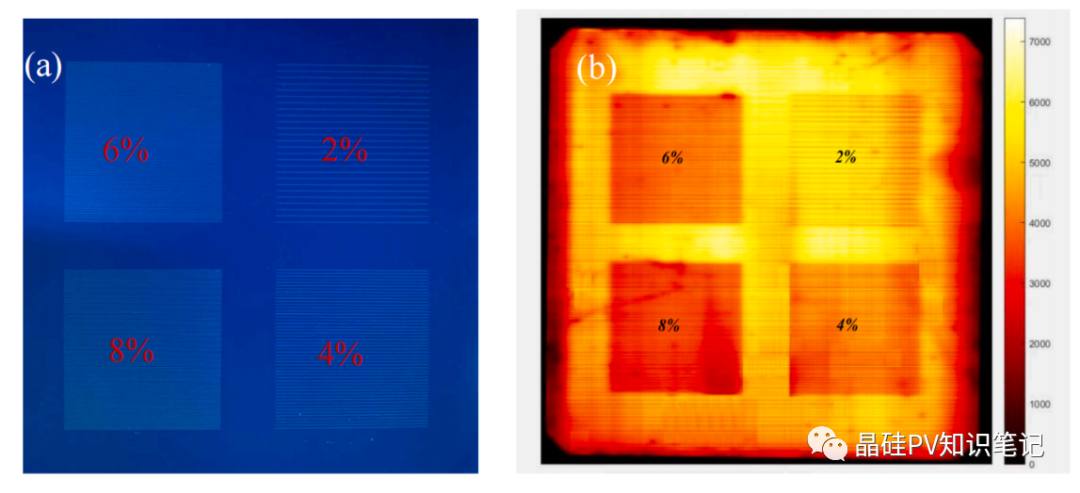
Fig. 4. The photograph of the screen-printing pattern of the sample with different metallization fraction from 2% to 8% (a) and Photoluminescence (PL) image (b) of the symmetrical samples were boron-diffused and passivated by Al2O3/SiNx films with our different metallization fractions on the front side. The metal was etched away before the PL measurement. The numbers in percentage indicate the metallization fractions.
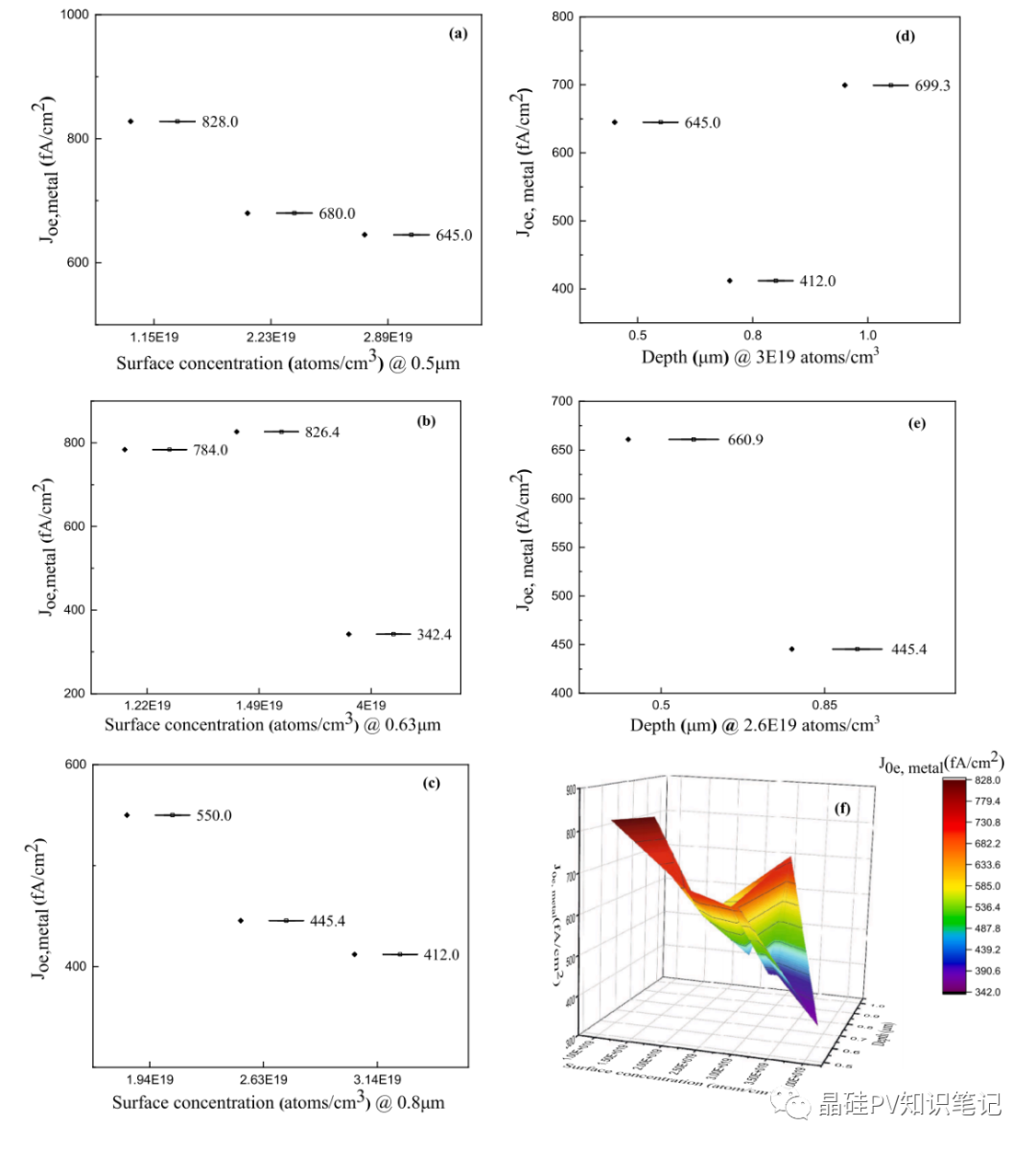
Fig. 5. The plots of emitter dark saturation current densities in the passivation on the contact regions of (a) emitter D1, (b) emitter D2, (c) emitter D3, (d) emitter N1, (e) emitter N2 and (f) the 3D-plot of J0e, metal as a function of the junction depth and the peak concentration of B-doped profile.
金半接觸界面(miàn)微結構
-
Ag/Al漿腐蝕深度 0.45~0.63 μm,比耗盡區寬度高5倍以上,可不考率耗盡區對(duì)接觸電阻的影響 -
B摻雜濃度大于  以上時,會顯著增加金半接觸區複合。表明在深度0.63 μm處B摻雜濃度臨界點要低于E18量級
以上時,會顯著增加金半接觸區複合。表明在深度0.63 μm處B摻雜濃度臨界點要低于E18量級
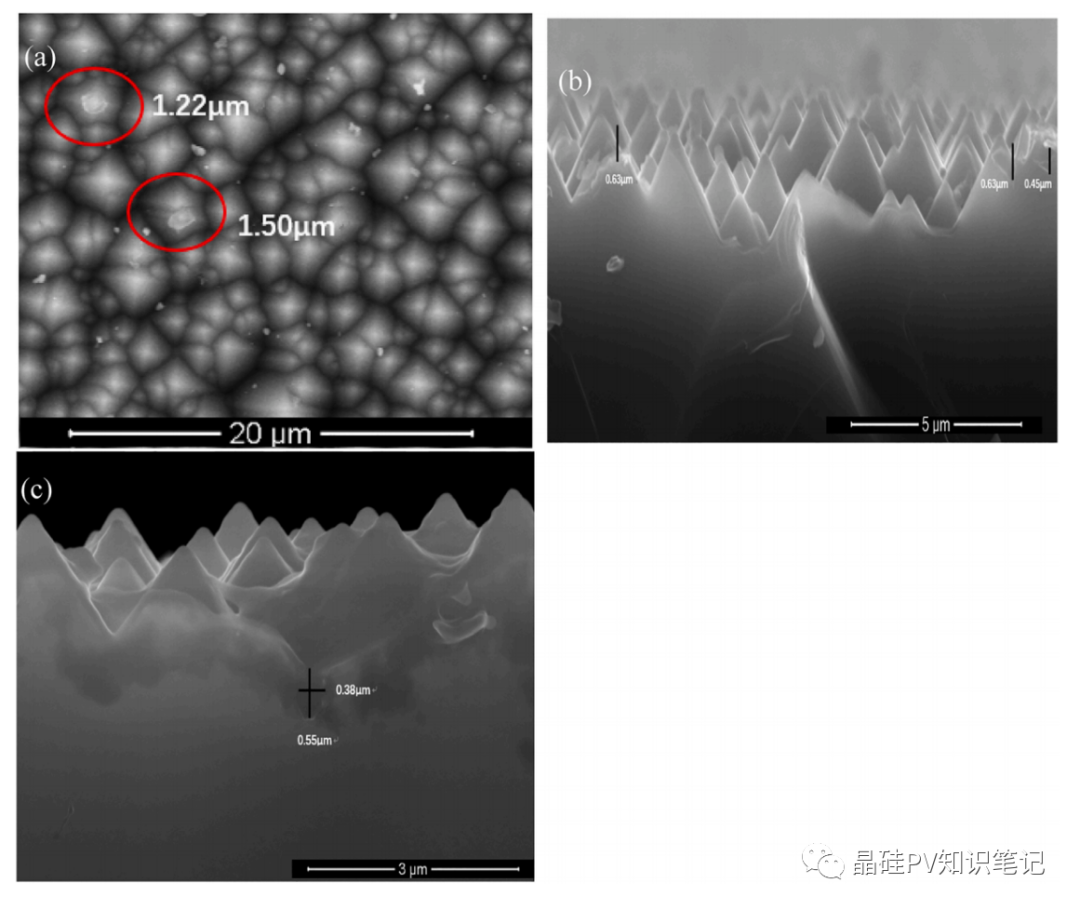 Fig. 6. (a) Scanning electron microscopy (SEM) image of emitter D3 sample (1.94 × 1019 atoms/cm3 ) surface after etching away the Ag–Al contact, the glass layer, the passivation layer, and all spikes. Remaining spikes imprints in red circles; (b)/(c) SEM cross section of contact spot. The shape of a corroded pyramid can be clearly seen.
Fig. 6. (a) Scanning electron microscopy (SEM) image of emitter D3 sample (1.94 × 1019 atoms/cm3 ) surface after etching away the Ag–Al contact, the glass layer, the passivation layer, and all spikes. Remaining spikes imprints in red circles; (b)/(c) SEM cross section of contact spot. The shape of a corroded pyramid can be clearly seen.
接觸電阻
-
随著(zhe)峰值摻雜濃度增加,結深增加,接觸電阻率減小 -
結深不變,可通過(guò)提升摻雜濃度,接觸電阻率可由4.5降至1.1 mΩ/cm2 -
摻雜峰值濃度不變,可通過(guò)提高結深,將(jiāng)接觸電阻率降至1.1 mΩ/cm2
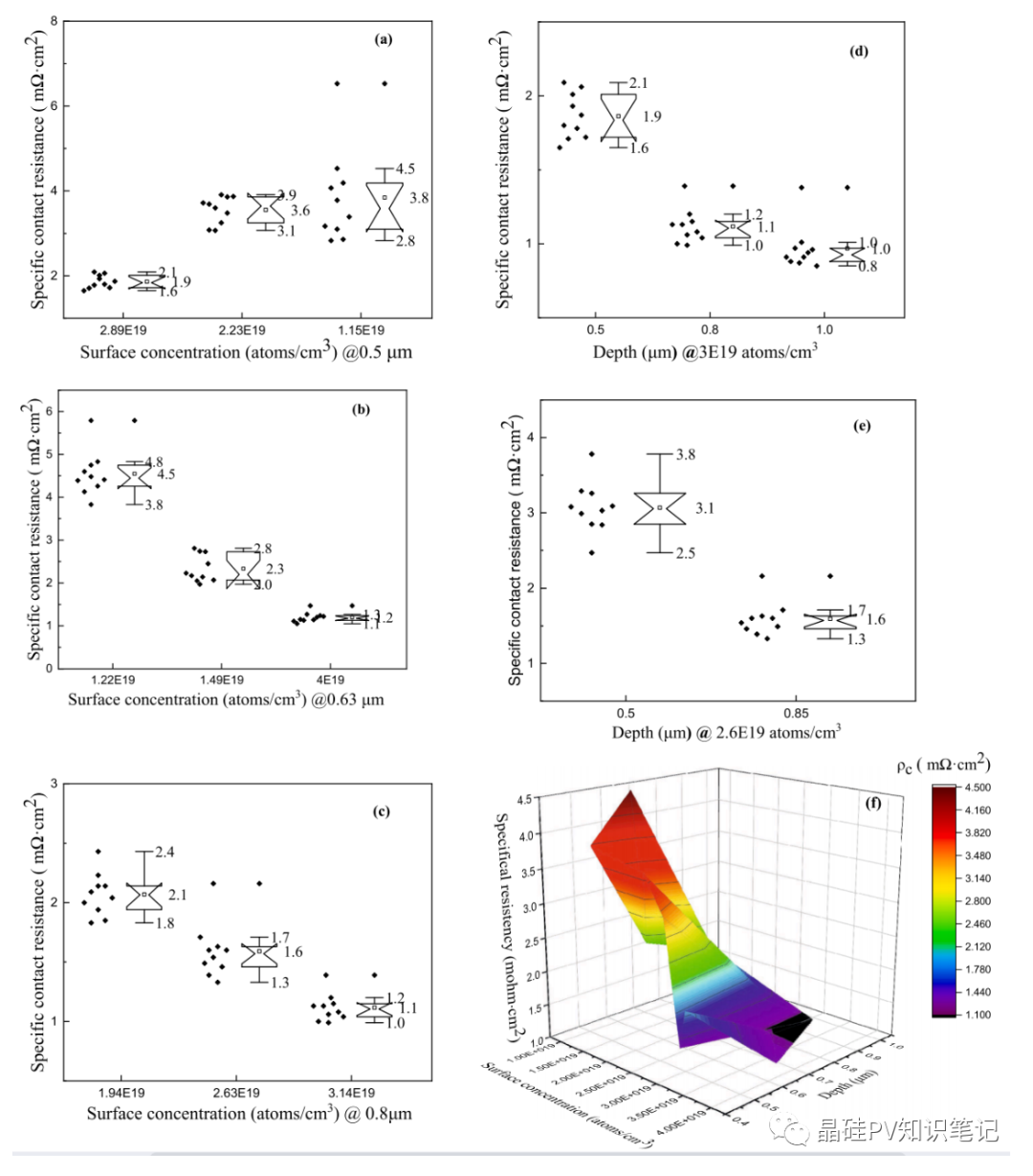
Precursor iVoc
-
QSSPC方式,取值1E15 cm-3過(guò)剩載流子濃度,1-sun光照條件下iVoc值 -
結深相同,随著(zhe)峰值濃度的增加,iVoc降低 -
峰值摻雜濃度相同,随著(zhe)結深的增加,iVoc降低 -
相比峰值摻雜濃度,結深對(duì)iVoc影響更大
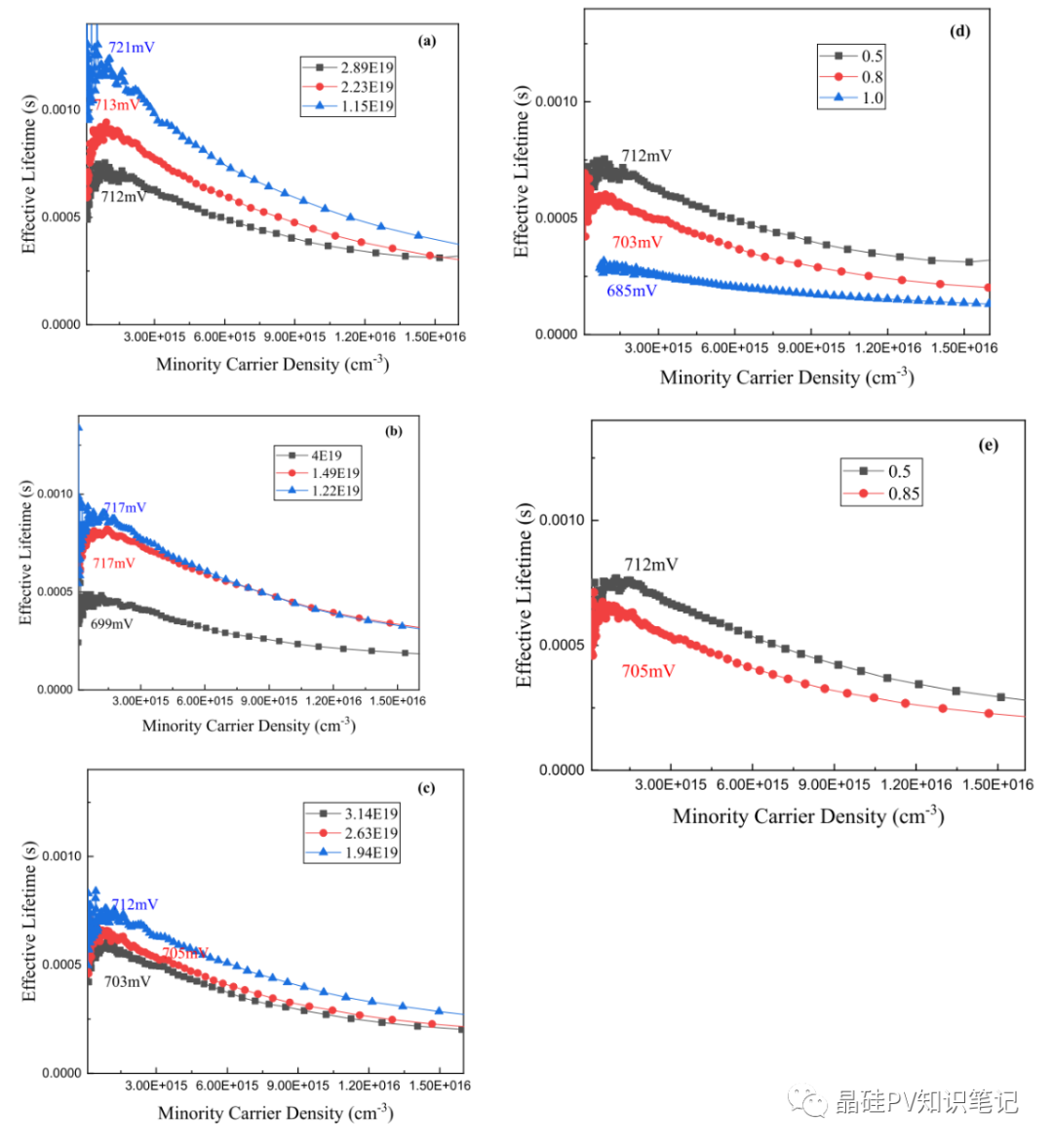
Fig. 8. iVoc and Lifetime of the precursor structure wafers obtained from (a) emitter D1, (b) emitter D2, (c) emitter D3, (d) emitter N1 and (e) emitter N2.
I-V參數影響
-
B摻雜曲線可以調整實際Voc與iVoc之間的差異,差異爲栅線接觸影響 -
結深對(duì)Voc的影響大于峰值摻雜濃度影響 -
飽和電流密度

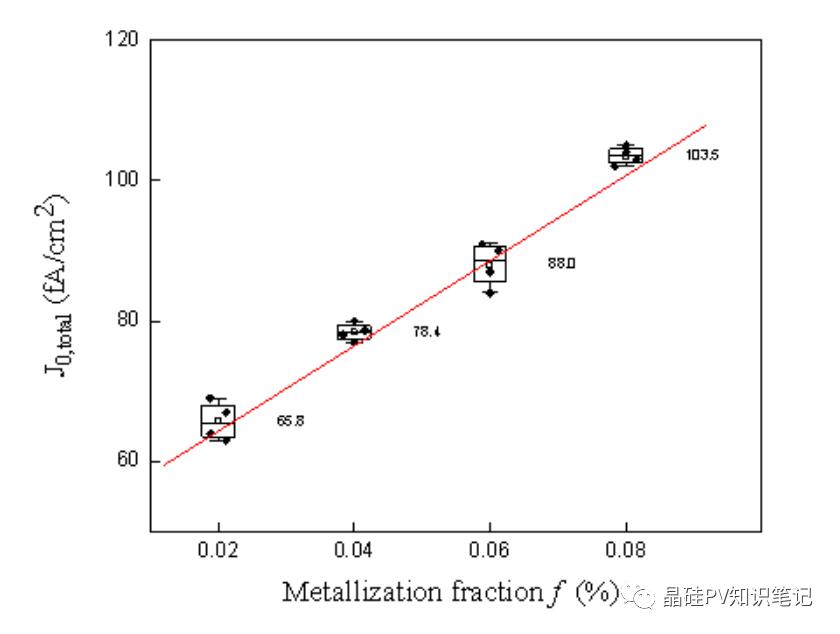
Fig. S1 Measured total J0 vs. the metallization fraction f of the symmetrically the p+np+ samples for the extraction of J0 at the contact regions.
失效分析
-
Yablonovitch極限電流密度 46.43 mA/cm2
三種(zhǒng)電流損失
-
藍光損失
-
基體收集損失
-
不均勻導緻的損失,矽片片内質量不均勻導緻的電流損失
-
複合導緻的電流損失
-
發(fā)射區和基區擴散長(cháng)度不足 -
受峰值摻雜濃度和結深影響 -
NIR寄生吸収損失,繞鍍影響
-
-
結深越深,藍光損失越高
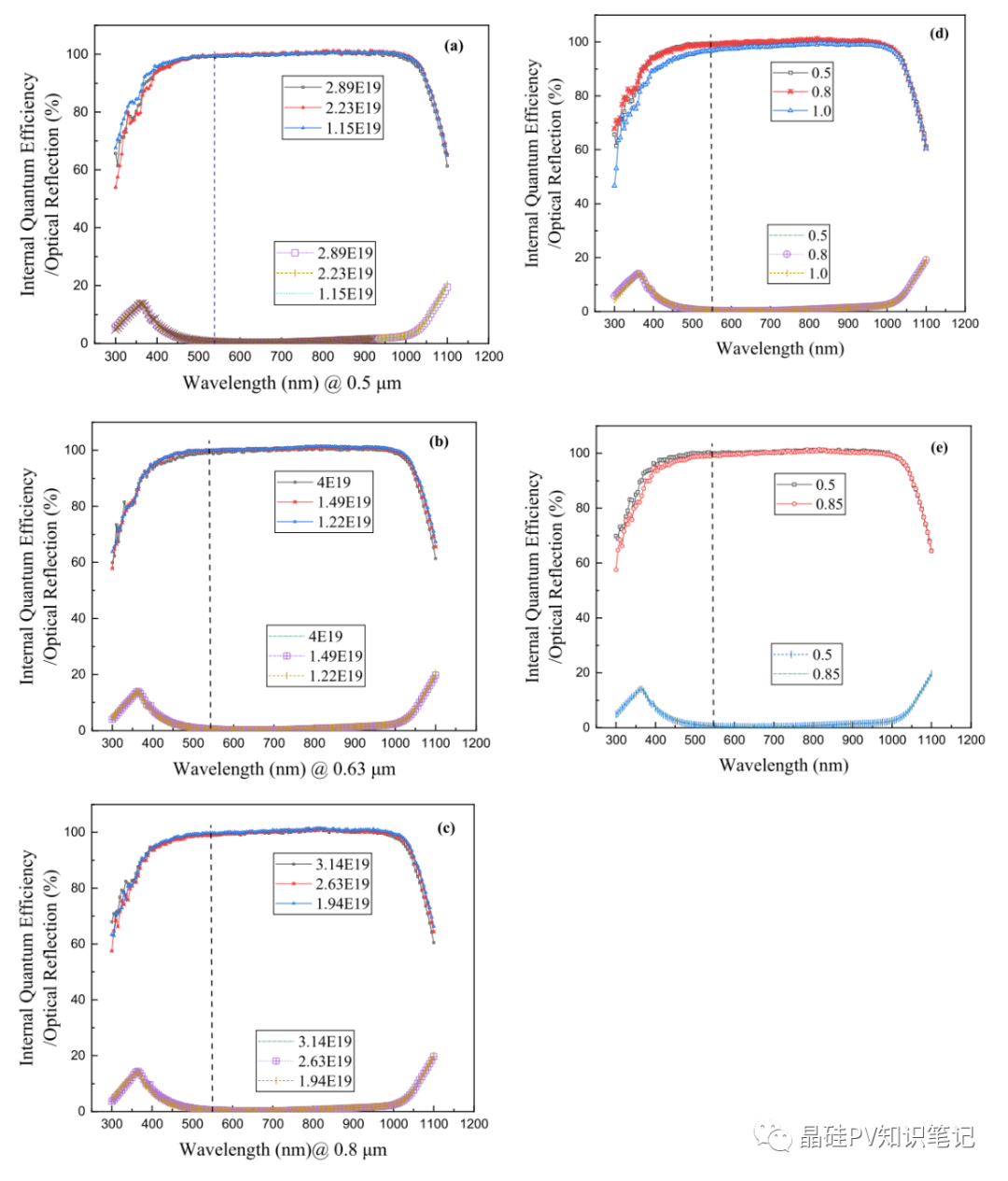
Fig. 10. The curve for internal quantum efficiency (IQE) and the dashed line curve for optical reflection for (a) emitter D1, (b) emitter D2, (c) emitter D3, (d) emitter N1 and (e) emitter N2.
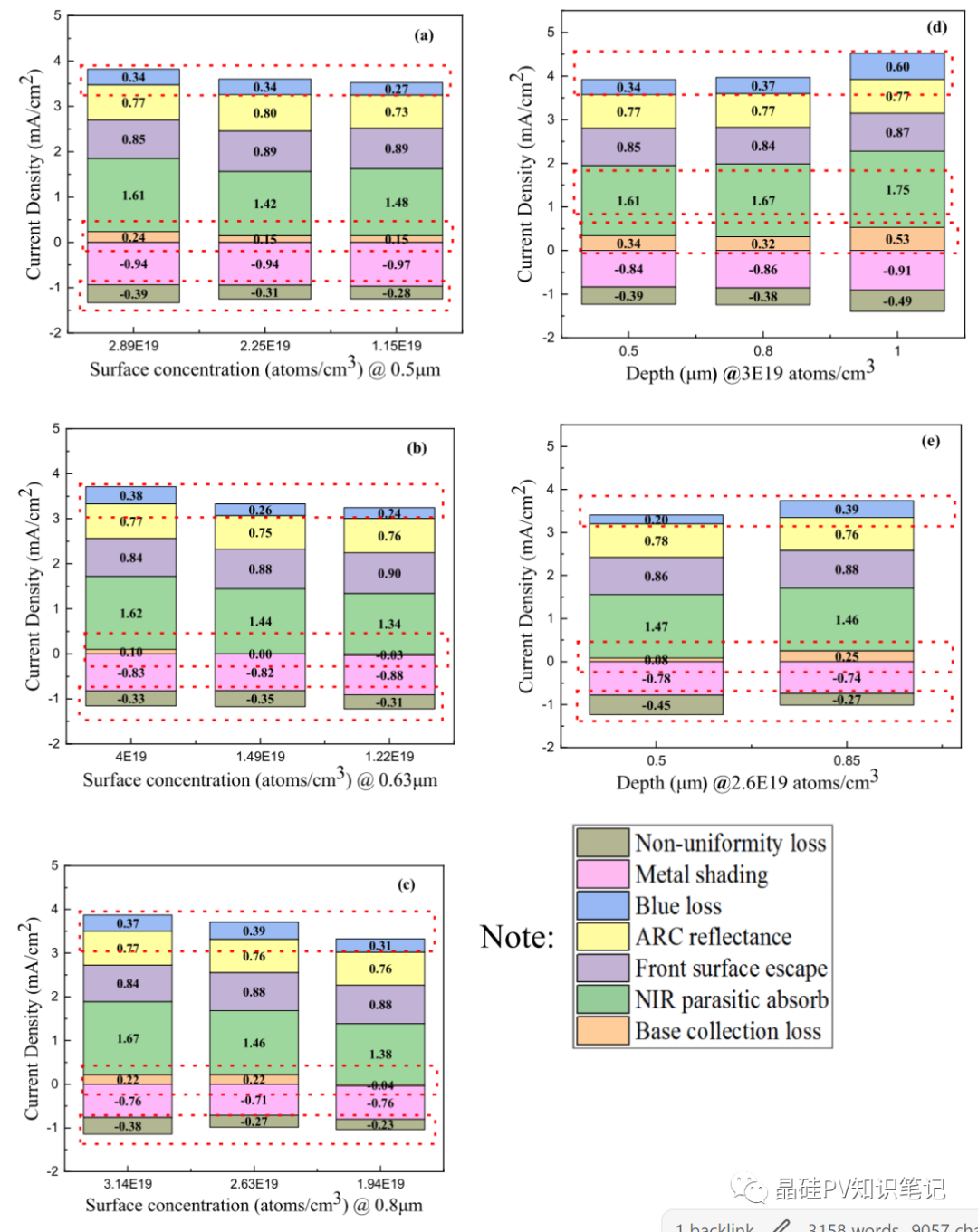
Fig. 11. Current loss mechanisms for (a) emitter D1, (b) emitter D2, (c) emitter D3, (d) emitter N1 and (e) emitter N2.
Prev
Prev

